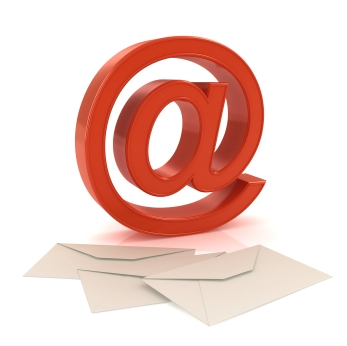This is the second part of my article on email etiquette. In the first part of email etiquette I told you about several basic rules and good practices of the email communication. Continuing on the same life, here are a few more important points that you should keep in mind while sending someone an email message.
- Remember, subject line of your email is very important. Always try to give a logical subject line to each new message you send. A subject line helps in:
- Separating your message from other forwarded spam
- Decision making by the receiver about when to read your message
- Searching of your message at a later date
- Do not send emails without a subject line. Also, as I said above, you should not use a vague subject line.
- If sending out a newsletter –send only to those who have subscribed to it and always provide an “unsubscribe” link.
- Never make emails written by others public. It is not only extremely rude but also an infringement of copyright. Always ask for writer’s permission before making email public or sharing it with select other persons.
- Try to keep official emails to-the-point and short. People nowadays don’t have time to read verbose text
- While replying to an email, write your message at the top of the conversation thread and NOT under the message that you are replying to. Such a practice sometimes makes the receiver think that you have not written anything from your side because they might not scroll down. Make sure, your signatures come between your reply and sender’s message. This would clearly indicate where your message is ending.

Email etiquette
- If your reply needs only to be a mere “yes” or “no” –it’s better to repeat the question you are answering to. Instead of just writing “No” –say something like “No, sorry but I cannot come to the tea party today”. Such a practice, evaporates the possibility of a confusion. Importance of being crystal clear and totally unambiguous is especially highlighted in the radio communication
- Do not use “High priority” option is it is not really a high priority email.
- Read your email before you send it out. You will find that this practice is very useful as you would change many things when you would read the email again. This will make your text more appropriate and clear
- In business emails, never use abbreviations (like FYI, BTW) or emoticons (like smiley)
- It is better to send plain text emails rather than rich text (HTML text) emails. If the receiver’s email client is only capable of reading plain text –your rich text email might not be read properly.
- If you are forwarding an email to someone, you should mention the reason why you think this email would be of receiver’s interest.
- Always give email a proper ending with “Thank you”, “Sincerely”, “Best wishes” etc.
- Use small (max 15-20 words) sentences. Email is used for speedy communication –long sentences might become confusing and nullify the sense of quickness!
- Include email addresses in the “To” field for those who you would like a response from. Include addresses in the “Cc” field for those who just want to keep in the loop.
- If you, by mistake, forward an email that turns out to be a hoax, send an apology to the receiver(s) for spreading wrong information. It is basic courtesy!
- Before sending an emotionally charged email, sleep over it. Read it again the next morning and see if you still want to send what you had written the previous day.
- As I said before, spammers target weak points in our psyche. Don’t be moved by emails of a dying child or something like that. You should first ascertain authenticity of such emails. One good way is to use websites like snoops.com to verify truthfulness of such emails.
- Give a cursory look at the Spam / Bulk folder before emptying it. Sometimes non-spam emails also land up being filtered.
So, my dear reader, these were the crisp points on how to courteously communicate using email. I would be delighted if you can add more to this list of email etiquette. Please feel free to comment and let me know your suggestions and questions.

Thanks Lalit,
Even obvious need refreshing.
Regards,
Janusz
Melbourne (Australia), Warsaw (Poland)
I want to type in Hindi to send SMS on WhatsApp. How can I do this?
I have written an article on this topic of sending WhatsApp messages in Hindi